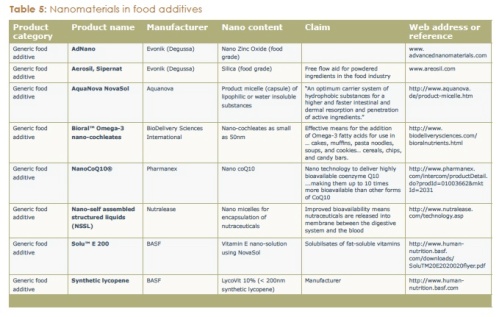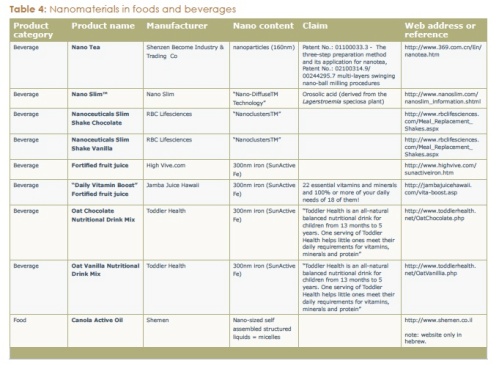The more I learn about what’s in our food, the more concerned, and outraged I get. I spent this morning immersed in Friends of the Earth‘s report on ‘Out of the Laboratory and onto our Plates: Nanotechnology in Food & Agriculture’. Scary stuff! Consider this:
Friends of the Earth’s new report finds that untested nanotechnology is being used in more than 100 food products, food packaging and contact materials currently on the shelf, without warning or FDA testing . . .
‘Nanofood’ describes food which has been cultivated, produced, processed or packaged using nanotechnology techniques or tools, or food to which manufactured nanomaterials have been added.
Nanomaterials can be used as more potent food colorings, flavorings and nutritional additives, antibacterial ingredients for food packaging, and more potent agrochemicals and fertilizers. For example, nanomaterials can be in the packaging around your crackers, provide the color of the meat you buy, and supply the added nutrients in the shake you feed to your toddler . . .Nanomaterials are an untested new technology and not well researched. The long term repercussions of using them in our food are not known. Nanoparticles have been shown in preliminary studies to be more chemically reactive than larger particles and when they find their way into our bodies, they can potentially wreak havoc. We also don’t know how much we can safely ingest without harm, but we do know that some studies have already shown that nanomaterials can adversely affect our immune system . . .
Here is the list of companies engaged in nanofood technology, many of them popular household names:
And the result is:
 For now, until the FDA and the USDA get their act together, it seems that we, the people, are once more on our own, when it comes to food and our health. The good news is, there are a few actions we can take:
For now, until the FDA and the USDA get their act together, it seems that we, the people, are once more on our own, when it comes to food and our health. The good news is, there are a few actions we can take:
- Avoid consuming highly processed foods and beverages
- Favor organic whenever you can
- Exercise your rights as a citizen and petition elected officials to ban nanofood altogether.
- Circulate this article in the citizen media – Twitter, blogs, Facebook, etc
Your health, and the health of your children is at stake.











